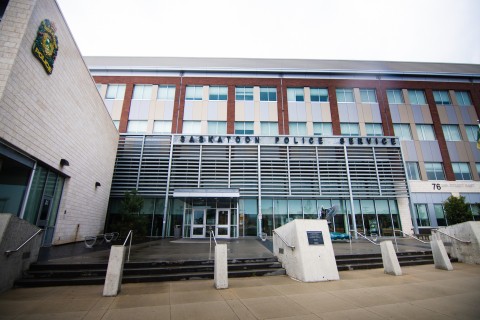
Following Jordan Lafond’s in 2016, Darian Lonechild calls on greater accountability measures for Saskatoon police.
Following an open letter sent to Mayor Charlie Clark and Saskatoon Police Chief Troy Cooper regarding the death of a man in 2016, one University of Saskatchewan student is slated to meet with both parties to discuss police accountability.
On July 4, Darian Lonechild, a fourth-year Indigenous studies student, Federation of Sovereign Indigenous Nations Youth Representative and co-chair of the Assembly of First Nations National Youth Council, sent an open letter calling on the Saskatoon Police Service to implement body cam- eras following the completion of a coroner’s inquest into the death of 21-year-old Jordan Lafond in 2016.
Lafond, a passenger in a stolen Ford F-150, died on Oct. 24, 2016 at Royal University Hospital a day after the truck he was riding in crashed into a fence near Bethlehem Catholic High School during a police pursuit. Sgt. Thomas Gresty, one of the Saskatoon police officers involved with the pursuit, told the coroner’s jury that he kneed Lafond in the head and upper body multiple times while arresting him.
The jury determined that Lafond’s death was accidental in nature, and pathologists were unable to conclude if Lafond died from injuries he sustained as a result of the crash or from the physical altercations with the acting officers.
Lonechild believes that police body cameras would have eliminated any ambiguities surrounding Lafond’s death.
“The presence of body cameras on the night Jordan Lafond died would have provided crucial and independent evidence to be used in the determination of the events that led to his death,” Lonechild said in her letter.
For Lonechild, recognizing the fact that Lafond was an Indigenous youth was of material importance to the case, as she believes it is emblematic of issues within the relationships between the Saskatoon Police Service and the city’s Indigenous peoples.
“The problems with the justice system — including the police — and its relationship with Indigenous people have been documented since the time Canada had claimed itself as a nation on Indigenous lands,” Lonechild said in an email to the Sheaf. “I do believe [body cameras are] one of the many direct solutions that need to be used in order to improve the relationship between Indigenous peoples and the police.”
In an email to the Sheaf, Mayor Charlie Clark touched on the importance of Lonechild’s letter, specifically regarding these relationships.
“I commend Ms. Lonechild for speaking out on the issue in her role as youth representative with the FSIN,” Mayor Clark said. “We have to keep a dialogue going to learn what will be required to avoid these devastating incidents, such as the one that led to Jordan Lafond’s death.”
However, Mayor Clark states that implementing police body cameras is not without its difficulties.
“The Board of Police Commissioners has discussed body-worn cameras and is monitoring pilot projects in other jurisdictions to determine if they do lead to these outcomes,” Mayor Clark said. “There are also concerns about these cameras when it comes to privacy of the public as well, and so, this requires a good understanding.”
Lonechild is expected to meet with Police Chief Troy Cooper and his executive team on Sept. 12 to discuss the implementation of body-worn cameras and how to improve the relationship between the Saskatoon Police Service and Saskatoon’s Indigenous peoples. Mayor Clark has also extended invitation for a meeting with Lonechild, though no date is set.
The Saskatoon Police Service also confirmed in an email to the Sheaf that this meeting is slated to take place, though they did not provide further comment regarding Lonechild’s letter.